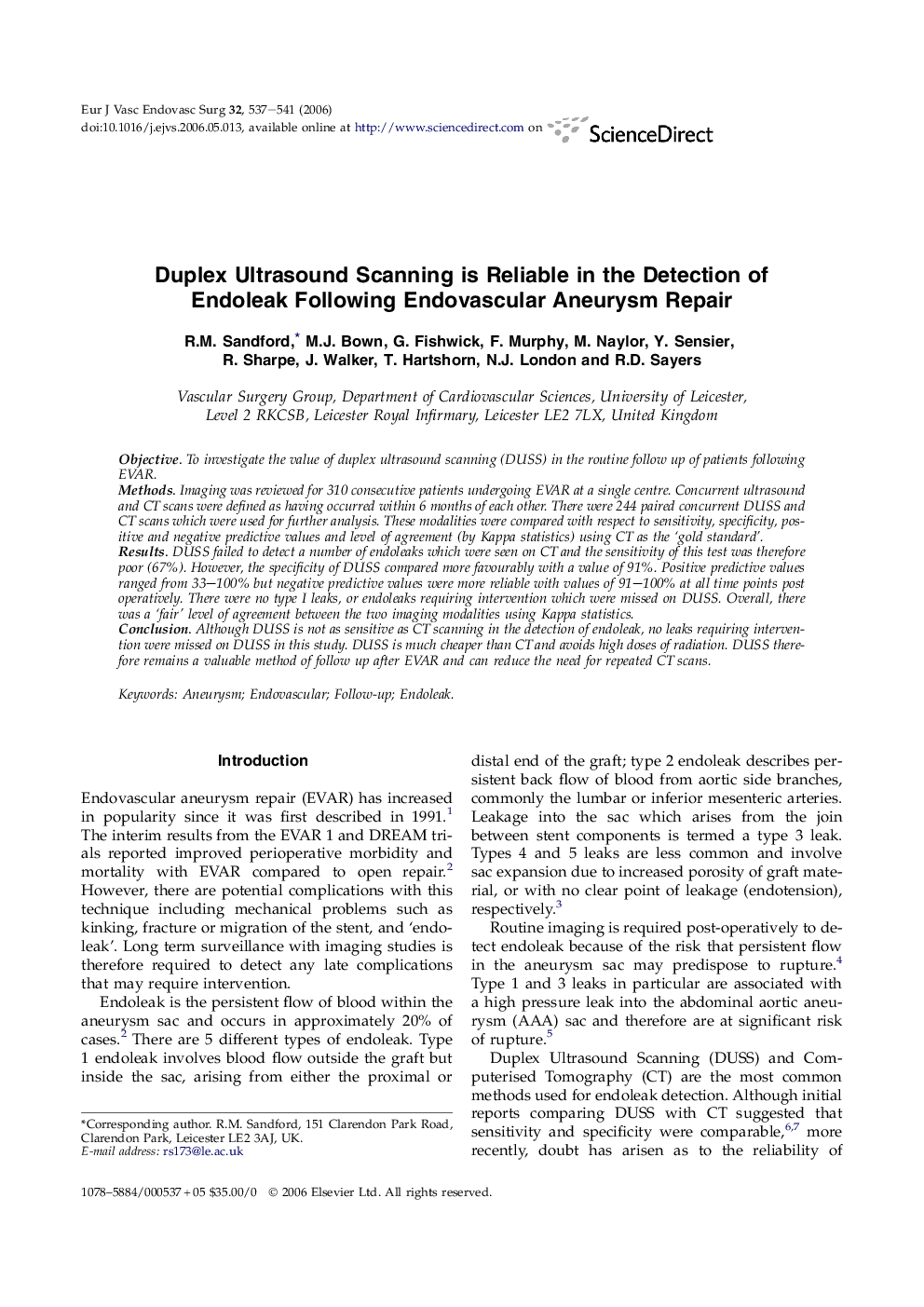| Article ID | Journal | Published Year | Pages | File Type |
|---|---|---|---|---|
| 2914749 | European Journal of Vascular and Endovascular Surgery | 2006 | 5 Pages |
ObjectiveTo investigate the value of duplex ultrasound scanning (DUSS) in the routine follow up of patients following EVAR.MethodsImaging was reviewed for 310 consecutive patients undergoing EVAR at a single centre. Concurrent ultrasound and CT scans were defined as having occurred within 6 months of each other. There were 244 paired concurrent DUSS and CT scans which were used for further analysis. These modalities were compared with respect to sensitivity, specificity, positive and negative predictive values and level of agreement (by Kappa statistics) using CT as the ‘gold standard’.ResultsDUSS failed to detect a number of endoleaks which were seen on CT and the sensitivity of this test was therefore poor (67%). However, the specificity of DUSS compared more favourably with a value of 91%. Positive predictive values ranged from 33–100% but negative predictive values were more reliable with values of 91–100% at all time points post operatively. There were no type I leaks, or endoleaks requiring intervention which were missed on DUSS. Overall, there was a ‘fair’ level of agreement between the two imaging modalities using Kappa statistics.ConclusionAlthough DUSS is not as sensitive as CT scanning in the detection of endoleak, no leaks requiring intervention were missed on DUSS in this study. DUSS is much cheaper than CT and avoids high doses of radiation. DUSS therefore remains a valuable method of follow up after EVAR and can reduce the need for repeated CT scans.
